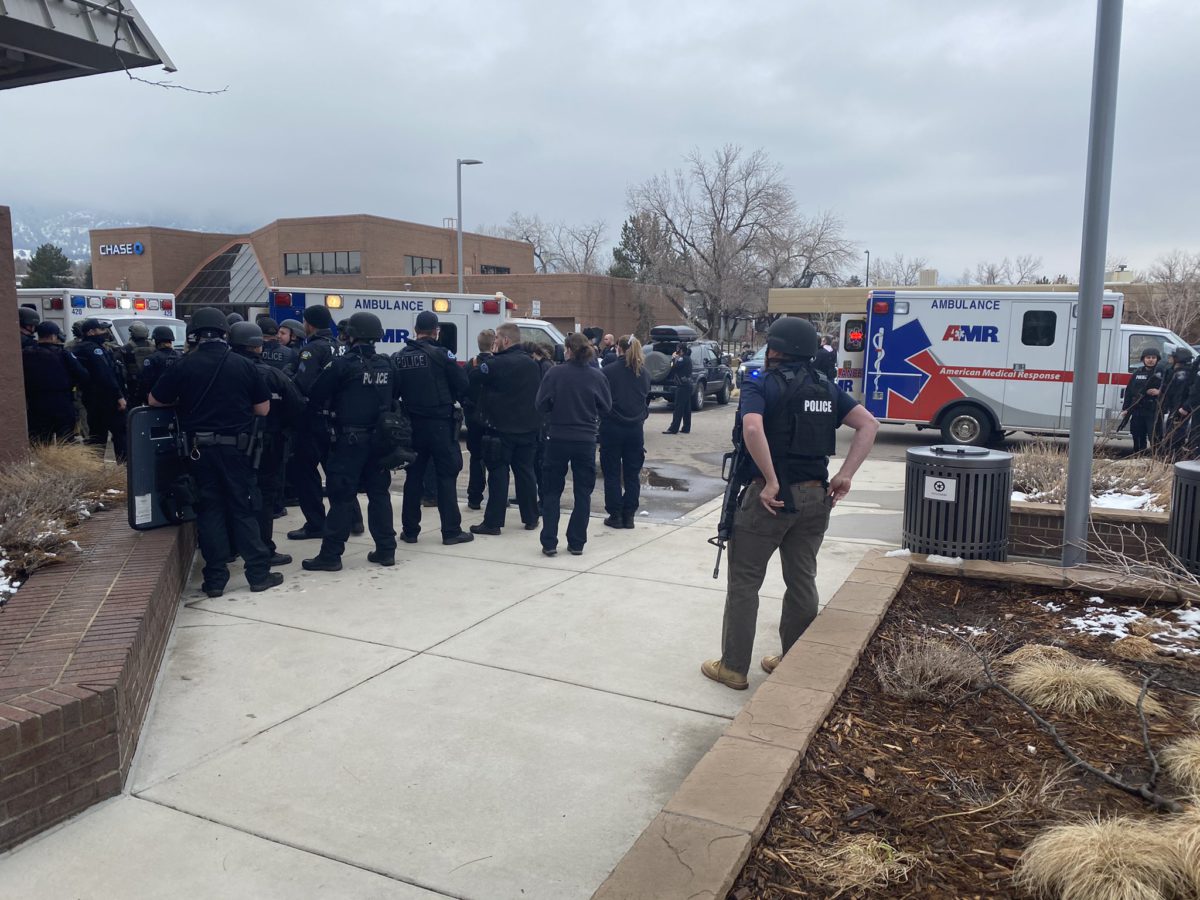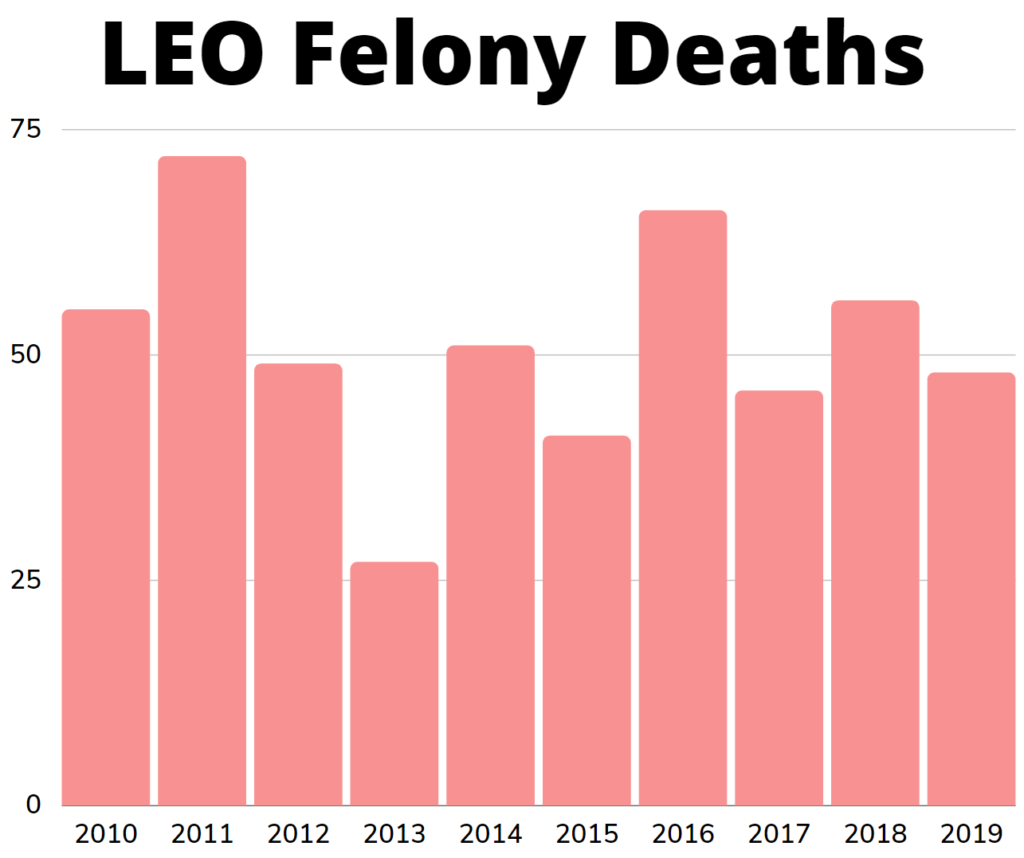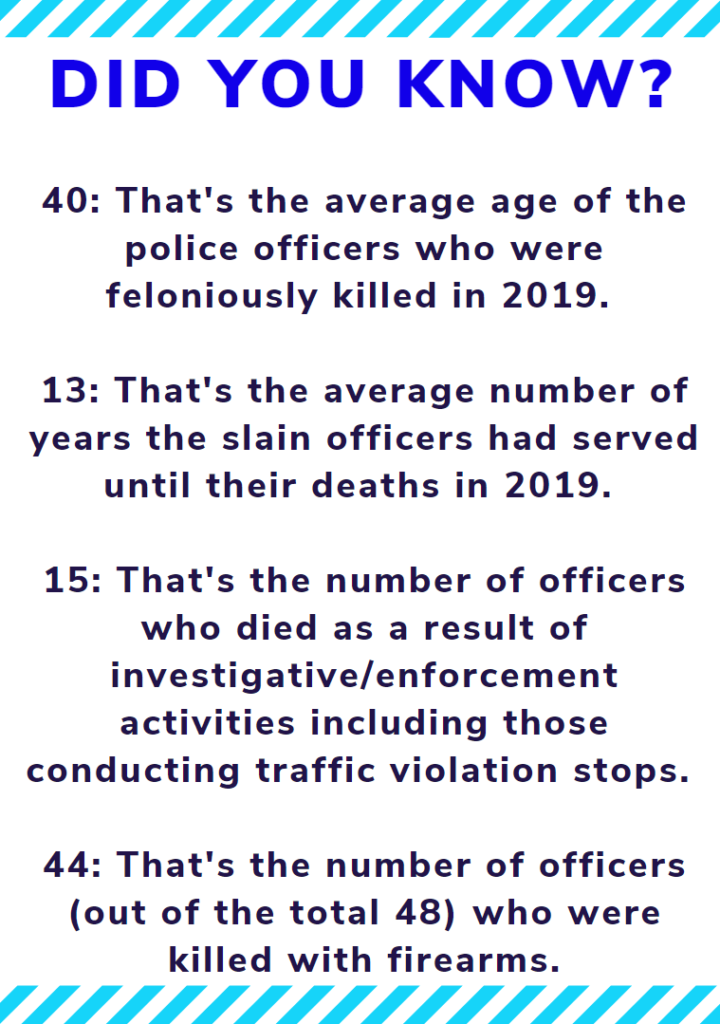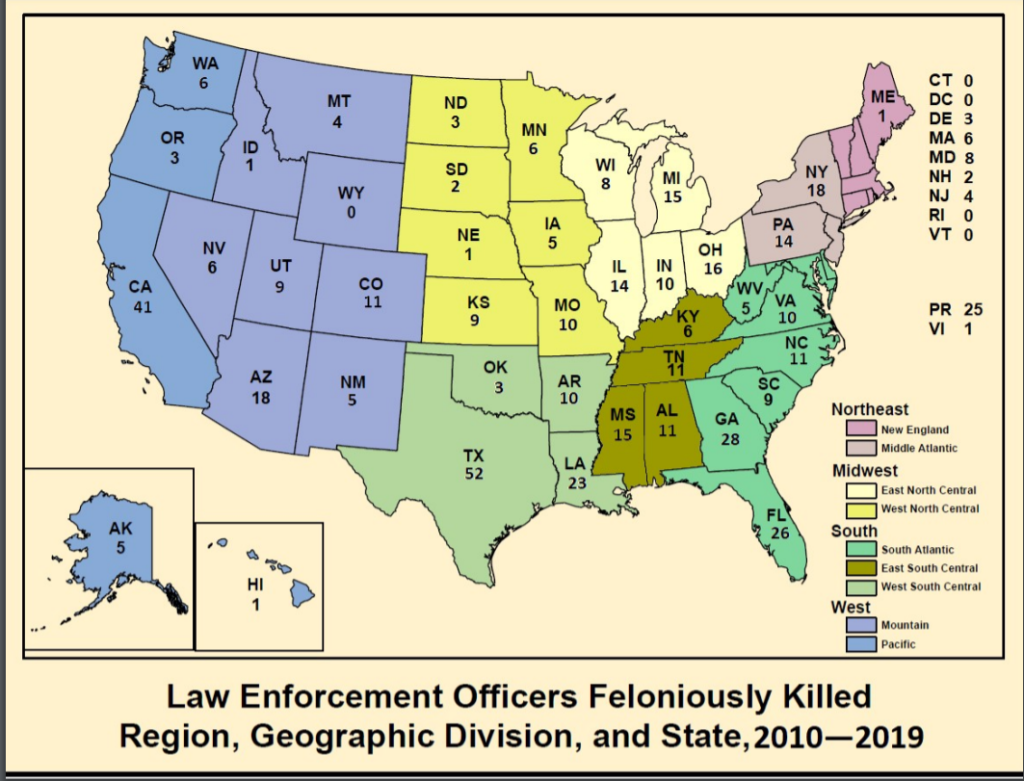
Beyond The Blue: Felony Killings Of American Law Enforcement, 2019
By Deepti Govind
On Monday, March 22, 51-year-old Boulder Police Officer Eric Talley, a man who waded into ditches to rescue ducklings, a loving father to seven children, and the first officer to respond to reports of an armed man being inside a Boulder supermarket, became another horrific statistic. He became the first officer from the Boulder PD to be killed in the line of duty since 1994, and the sixth on-duty death in the department’s history, according to the National Law Enforcement Officers Memorial Fund. Twenty-one-year-old Ahmad Al Issa, the suspected shooter, went on to kill nine more people, ranging in age from 20 to 65. Three years ago, we had examined the felony killings of American law enforcement, 2016-2017. In the wake of Officer Talley’s death, we revisit those numbers.
In 2019, 56,034 law enforcement officers were assaulted while performing their duties, according to assault data collected by the Federal Bureau of Investigation from 9,457 law enforcement agencies that employed 475,848 officers. The year before that, 58,866 officers were assaulted while on duty, but that data was collected from a larger sample size: 11,788 law enforcement agencies that employed 546,247 officers.
The rate of officer assaults was higher in 2019 than in 2018, despite the smaller sample size. In 2019, the rate was 11.8 per 100 sworn officers, compared with 10.8 per 100 sworn officers for 2018. Nearly 80% of those assaults were done using personal weapons, i.e. hands, fists or feet, while 3.8% were done using firearms, 1.9% with knives or other cutting instruments, and 15.1% with other dangerous weapons.
Of all the officers who were assaulted in 2019, 30.4% were responding to disturbance calls, including family quarrels or bar fights, while 17.1% were attempting other arrests, and 12.8% were handling, transporting, or maintaining custody of prisoners.
This is based on data from the FBI’s Uniform Crime Reporting (UCR) Program on LEOKA (Law Enforcement Officers Killed and Assaulted) for 2019. It focuses just on officers who have died because of injuries received on duty in felonious incidents. This is to separate felonious deaths from accidental ones, or ones where the officer was not on duty, or had not identified himself or herself as law enforcement.

Note: Although the FBI does publish a table listing comparable data across a decade, the sample sizes for the data each year could vary, as mentioned earlier in this piece between 2019 and 2018, for instance.
By any yardstick, when you factor in the rate of assault and injury on duty, being in law enforcement gets catapulted to the top of any “most dangerous jobs in America” list. While being a law enforcement officer isn’t necessarily called the most “dangerous job in America” in terms of numbers, it is probably the only legal peacetime job out there where you wake up and leave for work every morning, knowing someone may intentionally try and kill you that day. And the next. And every single day thereafter. Day in, day out. Week in, week out, year in, year out. Or at least, someone may try their best to do so.
Three years ago, we had examined the felony killings of American law enforcement, 2016-2017. Now we look at the numbers for 2019, the most recent year for which data is available.
In 2019, 48 law enforcement officers died from injuries incurred in the line of duty during felonious incidents. That compares with 55 in 2018. The law enforcement officers included in the report met certain criteria, such as they had full arrest powers and they ordinarily wore or carried a badge and firearm. By region, 27 officers were feloniously killed in the South, 9 officers in the Midwest, 9 officers in the West, 1 officer in the Northeast, and 2 officers in Puerto Rico.
More law enforcement officers were killed in the line of duty in December than in any other month in 2019 as a result of felonious incidents. More law enforcement officers were also feloniously killed on a Saturday, than on any other day of the week that year. Most of the officers were fatally injured in assaults that happened between 12:01 p.m. and midnight.
Over a 10-year period, going back to 2010, Monday had the least number of incidents related to officers feloniously killed in the line of duty in terms of percentages, while Wednesday and Saturday were nearly tied for the maximum.
Of the officers who died due to felonious incidents in 2019, 45 were male and 3 were female. When it comes to race, 40 of the victim officers were White, 7 were Black/African American, and 1 was Asian.
Over 60% of the officers feloniously killed last year were wearing body armor at the time of the incidents. Of those, 29 were killed with firearms. Eight were shot in the front upper torso/chest, while 11 died from being shot in either the front, side, or rear of the head.
The first known law enforcement officer believed to have been feloniously killed in the line of duty in the United States of America was a veteran, killed less than a decade after the end of the Revolutionary War he fought in. Columbia County (NY) Sheriff Cornelius Hogeboom was shot on Oct. 22, 1791, as he attempted to serve a writ of ejectment. His alleged murderers, all 10 of them, were all apparently acquitted.
On March 22, a gunman opened fire at a King Soopers outlet in Boulder, Colorado, killing ten people including police officer Eric Talley, who responded to the incident. This is the second mass shooting in the U.S. in under a week, as it comes just six days after another gunman’s deadly shooting spree at massage parlors in the Atlanta area. Among the victims of the massacre in Boulder was Officer Eric Talley, 51, with the Boulder Police Department. Talley had responded to a “barrage” of 911 calls about the shooting, Chief Maris Herold said, according to a New York Times report.
“He was the first on the scene, and he was fatally shot. My heart goes out to the victims of this incident. And I’m grateful to the police officers that responded. And I am so sorry about the loss of Officer Talley,” Herold said at a news conference at the scene of the shooting, according to the New York Times report.
The Victims & The Offenders: What We Know

In 2019, 49 alleged offenders were identified in connection with the 48 law enforcement officers feloniously killed. The average age among the offenders was 31, and of the 49, only one alleged offender was female.
When it comes to race, most of the alleged offenders were White (28), followed by Black/African American (15), and one Native Hawaiian/Other Pacific Islander. Race was not reported for five of them. Twelve of the alleged offenders were under judicial supervision at the time of the incidents.
Of the alleged offenders for 2019, more than 73% had prior criminal arrests. Even the suspect in the Boulder shooting, a 21-year old from a nearby Denver suburb who used an AR-15 type of assault rifle, was known to the FBI.
The suspect, identified on March 23 as Ahmad Al Aliwi Alissa, of Arvada, has also come in contact with the police in Arvada, Colorado, before. Arvada police had two encounters with him in 2018 — one on a report of third-degree assault, a misdemeanor, and one of criminal mischief. It is not clear if he was convicted of a crime. The suspect’s identity was also known to the FBI because he was linked to another individual under investigation by the bureau, according to law enforcement officials, according to the New York Times report.
The Bureau’s main LEOKA report is based on data collected from non-federal agencies, but it also carries data on federal officers in a separate section. That section shows that in 2019, no federal officers were killed, but a total of 2,136 federal law enforcement officers were assaulted. Of the 2,136 officers who were assaulted, 372 were injured.
In terms of departments, the U.S. Department of the Interior employed 978 of the officers who were assaulted, of which 107 officers were injured. The U.S. Department of Homeland Security employed 733 of the federal officers who were assaulted, and 240 of them were injured.
